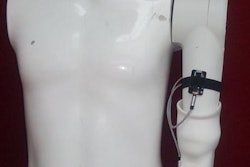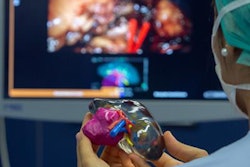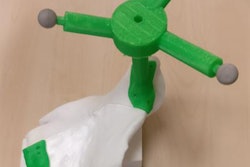Researchers from Germany have created a 3D-printed bionic prosthetic arm for a man born without a hand and most of his left arm, according to a case study presented on Artec3D.com.
Since 1997, orthopedic technician Carsten Suhle and colleagues from Sanitätshaus Klinz in Bernburg have worked toward developing functional prosthetic implants for patients like Paul Teupel who are born without certain limbs. In 2017, the group turned to 3D printing technology to create a 3D-printed bionic arm for Teupel.
The researchers first acquired images of Teupel's arm using a handheld 3D light scanner (Eva, Artec), and then used the imaging data to generate virtual 3D arm models that would match the patient's anatomy.
They input these models into a 3D printer to produce the 3D-printed arm, which they subsequently equipped with wires and sensors capable of detecting muscle electricity and coordinating arm and hand movement. The final version of the double-jointed 3D-printed prosthesis allows for a 90° range of movement.
"With many hundreds if not thousands of movements performed each day, Paul's body needs a prosthesis that naturally harmonizes with it, as an extension of the body, so that within a short period of time, he can just live his life and not think about his arm. ... With Paul, I think we've achieved that," Suhle said in the case study.
In light of this and similar advances in 3D imaging and 3D printing, the German government's health insurance system has decided to reimburse for 3D modeling and 3D printing of prostheses, according to the post.



















